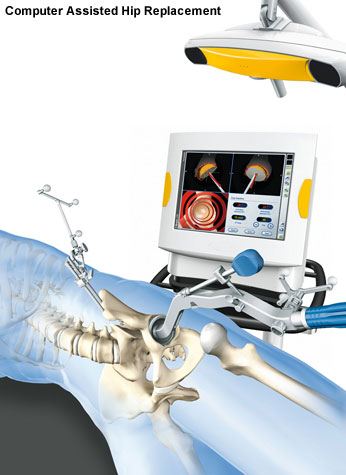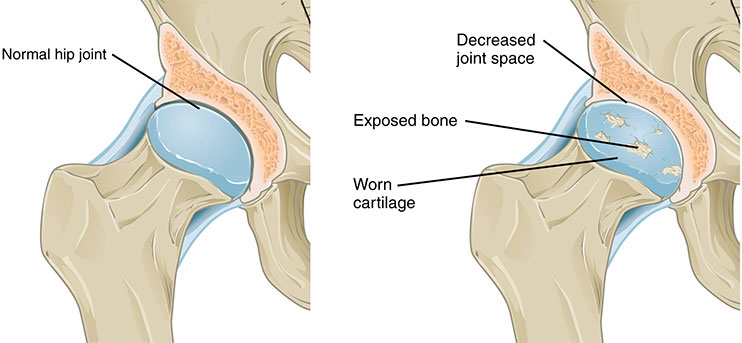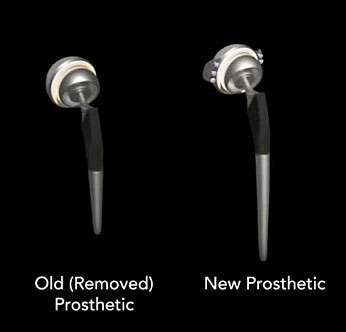


Total Hip Replacement (THR) or Arthroplasty (THA) surgery restores the articulation mobility and stability by implanting a prosthetic hip joint. The selection and positioning of the implant are critical in this procedure. Conventional planning seeks the optimal selection of implant characteristics by relying on a “static” approach which only exploits anatomical cues derived from a plain radiograph or a CT scan. Dynamic aspects are indeed neglected, such as pelvic tilt during postural changes and the necessary motion of the prosthetic hip to yield a satisfactory range of motion (ROM) in everyday life.
Despite an adequate planning, its execution during the surgical act remains problematic, since intra-operative guidance is not commonly provided. As a result, the effective positioning of implants may significantly deviate from the planning. A post-operative assessment of the prosthetic hip is hence necessary to investigate the quality of the surgery.
Computer assisted navigation systems have been developed as a means to provide more accurate guidance during implantation of artificial hip joints. The advantages of computer-assisted hip surgery are increased accuracy, decreased invasive operations, improved planning and simulation, and reduction in radiation exposure.
This procedure uses three dimensional (3D) computer images to assist the surgeons in complex hip replacement surgeries by combining preoperative planning and intra-operative performance by displaying 3D computer images in relation to patient anatomy and consist of a computer workstation with image processing and surgical planning software, a localization system and a display monitor.

Computer software enables the surgeon to rotate and magnify areas to determine cutting planes and implant position and to measure distances, angles and volumes to provide surgical guidance. Computer assisted navigation involves three processes: data acquisition, registration and tracking. Data can be obtained using CT or MRI systems. Registration techniques use the placement of pins or markers in target zones and tracking uses sensors and measurement devices to provide feedback during surgery.
At the current time however, there are some barriers to computer-assisted hip replacement surgery that include increased operating time, and extensive training of the surgical team. However, this extra time is minimal once the surgeon becomes proficient.
The clinical application of computer-assisted total hip replacement (arthroplasty) is less common and is currently confined to a few surgeons experienced in such techniques. Dr. (Prof.) Anil Arora with years of experience and his inclination towards imbibing and applying newer technologies in joint replacement, is able to perform the computer assisted hip replacement in approximately 60 minutes, which is quicker than some surgeons who perform hip replacement using the conventional technique.

Your hip is a ball-and-socket joint where the thighbone or femur (ball) meets the pelvis (socket). This joint is surrounded by cartilage, muscles, and ligaments that allow it to move smoothly. The cartilage is a smooth, shock-absorbing layer that covers the bones and allows the ball to glide easily inside the socket. The muscles around the joint support your weight and help move the joint smoothly so that you can walk without pain.
Arthritis of the joint is the most common reason for a hip replacement. Arthritis damages the cartilage which no longer serves as a cushion and exposes the underlying bone. This causes roughening of the bones and they rub together like sandpaper. The ball grinds in the socket when you move your leg, causing pain, stiffness and immobility. The affected leg may become shortened, muscles may become weaker and a limp may develop. The above image shows a normal hip joint in comparison to a degenerated hip joint.
There are numerous conditions that can cause Arthritis and often the exact cause is never known. In general, but not always, it affects people as they get older (Osteoarthritis). Other causes include:
Total Hip Replacement (THR) or Total Hip Arthroplasty is an operation to replace the worn or damaged parts of your hip joint. The surfaces of the diseased joint are removed and replaced with a mechanical, artificial joint called a prosthesis. This surgery can relieve the pain and stiffness in your hip joint.
Your new hip prosthesis has femur and pelvic parts made from metals and plastics. The cup replaces the worn hip socket of your pelvis. The ball replaces the worn end of your thigh bone (femur). The ball is attached to a stem that fits into your femur. The cup and stem are sometimes cemented in place with a special bone cement, or the metals may have a porous surface that bone will grow into and create a tight fit.
The prosthesis can last 10 to 15 years. However, over time it may become worn and loose and a replacement (revision) of the hip may be required.
The video animation below shows the stages of Total Hip Replacement (THR).

A hip replacement is a mechanical device with parts that are assembled before and during the operation, most commonly referred to as a "ball and socket." After surgery, the prosthetic ball and socket restore movement in the hip during the life-span of the prosthesis. Current surgical techniques and hip replacement implants provide excellent clinical results and predictable long-term outcomes.
However, over time the original components of a Total Hip Replacement (THR) can break down and loosen from the bone surface they were once firmly attached. Revision Hip Replacement, also known as Revision Total Hip Arthroplasty, involves the exchange of some or all worn components with new ones. The degree of complexity for this procedure is dependent on the amount of loosening and associated damage to the underlying bone surfaces that may have occurred over time. Specialized components, bone graft and cement may be used to rebuild the hip joint.
Dr. (Prof.) Anil Arora will compare a series of your x-rays taken over many years to observe changes in implant position or the condition of the surrounding bone. Based on these factors, he will decide with you if a revision surgery is necessary.
These problems can make it difficult for you to walk, and can sometimes cause pain. If your hip replacement is coming loose because of wear or infection, it will probably get more painful over time. The bone around a loose hip replacement can get thin and it may fracture. You will need to have a major surgery to fix the fracture and do your hip replacement again. If you have an infection in your hip replacement, it can spread to other artificial joints and vital organs.
The complexity of the operation depends largely upon which components of your hip replacement need to be removed.
All of these operations are technically demanding and take considerably longer to perform than a normal hip replacement. The length of the operation often depends upon how difficult it is to remove the original prosthesis and whilst Dr. Arora will make an assessment of the estimated operating time prior to surgery, it is not always possible to establish exactly how complex the procedure will be until the operation is in progress. However, as a general guide an Acetabular revision usually takes less time than a Femoral revision whilst a Total revision procedure is the most complex of the three procedures.
During hip revision surgery, Dr. (Prof.) Anil Arora will make an incision near the hip, enter the hip and take the hip out of socket. The bones and tissue about the hip will be carefully assessed. Dr. Arora will check to see if the hip replacement parts are firmly fixed into the bone (stability) and check their positioning in the bone (alignment). One or more components of the artificial hip will be removed and replaced with new parts. Bone graft may be placed in bone and soft tissue (such as tendon and muscle) will be repaired as needed.
Tissue and/or fluid from the hip may be tested to see if an infection is present. If these tests show that the hip is infected, or if Dr. Arora is highly concerned about infection, he may elect to remove the hip replacement and put a temporary "spacer" in its place instead of a new hip replacement. If this happens, the patient will likely need antibiotics for a number of weeks and will need to undergo additional surgery to have a new hip replacement put in place at a later date. Dr. Arora's specific course of action will determined at the time of surgery, based on his evaluation of the joint. The absence of any infection will require a single operation to replace the joint.
When the new prosthesis has been fitted the skin will be closed using stitches or clips. In some cases a small plastic tube is inserted near the operation area this is called a drain and allows any build up of fluid near the operation site to drain away in to a small plastic bag attached to the end of the tube. The drain will be removed on the ward approximately two days after the operation. A dressing will be applied over the wound site.

The revision procedure requires mastery of difficult surgical techniques to achieve good results. Dr. (Prof.) Anil Arora specialises in very difficult revision operations where patients have often been told that further surgery is not possible.
Rehabilitation will begin soon after surgery. The rehabilitation is often longer and more challenging when compared to the patient's original hip replacement surgery. The patient will participate in therapy in the hospital with the goal of achieving safe transfers from the bed, short distance walking, and an early exercise program. The patient may be required to restrict the amount of weight placed on the operated leg and/or may need to wear a brace to prevent excessive hip motion. After discharge, the patient will continue with physiotherapy and a home exercise programme. The patient's motivation and willingness to participate in the rehabilitation program are critical in determining final strength and walking pattern.